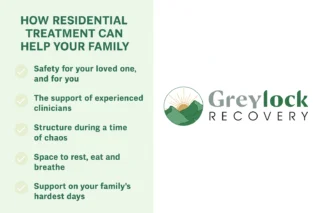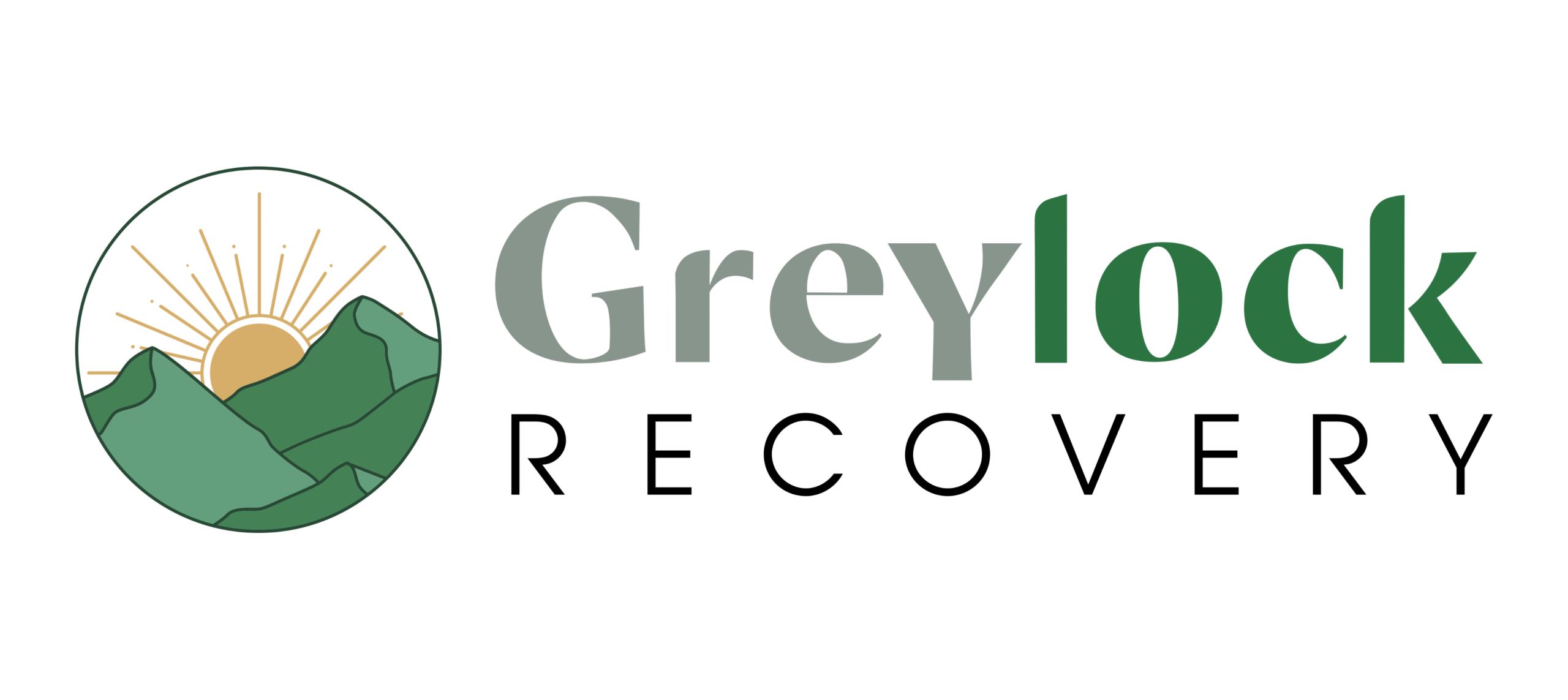When everything was falling apart, I remember one moment that quietly shifted everything. Not a breakdown or a crisis scene—just me in the car, outside my son’s apartment, hands gripping the steering wheel, breathing like I was learning how again. I didn’t know what the next step was, but I knew we couldn’t survive another week like this.
That moment brought us to residential treatment at Greylock Recovery. And for the first time in months, we felt like we weren’t drowning.
You’re Not Crazy. You’re a Parent Watching Someone You Love Slip Away.
If you’re reading this, you probably already know what it’s like to watch your child transform into someone you barely recognize. Maybe it was sudden, maybe slow. Maybe it looked like rage, isolation, scary impulsive choices. Maybe it was drug use. Or voices. Or months of lying and a thousand tiny disappearances from the life they once lived.
Whatever it is, I know this: you are not imagining it. You are not overreacting. And you are not alone.
But you are scared. And tired. And trying to figure out what the hell “getting help” even means.
What We Got Wrong (At First)
We thought he just needed a therapist. Then we thought he just needed sleep. Or better friends. Or more consequences. Or maybe more love. There’s a kind of desperate math you start doing when your kid is in crisis:
- “If we just do this one more thing…”
- “If we wait it out a little longer…”
- “If we don’t say anything tonight, maybe tomorrow will be better.”
But behavioral health crises don’t usually work on logic, love, or luck.
And no amount of holding your breath fixes the feeling that the bottom could drop out at any second.
Why We Chose Residential Treatment
Residential treatment was the last thing we thought we’d ever do. It felt like waving a white flag. Like failure. But it wasn’t.
It was the first time we had real options.
At Greylock Recovery in Williamstown, Massachusetts, we found a program that didn’t look like a hospital and didn’t treat us like cases. They didn’t need us to have the perfect diagnosis. They didn’t ask us to prove how bad things were. They believed us.
Residential treatment gave us three things we didn’t know we needed:
- Safety. Not just for our son, but for us. We stopped sleeping with one ear open. We started eating again.
- Structure. The chaos at home got replaced with a steady, thoughtful rhythm—therapy, meals, sleep, support.
- Support. Real clinicians, real people who had walked families through this exact kind of fire.
What Happens Inside a Residential Treatment Program?
There’s so much fear around the word “residential.” We pictured something cold. Institutional. Restrictive.
What we found was grounding. Healing. Necessary.
At Greylock Recovery, here’s what “residential treatment” actually looked like:
- A clean, welcoming space in Williamstown, Massachusetts—surrounded by nature and calm
- 24/7 support from trained professionals who specialize in complex behavioral and mental health needs
- Individual therapy, group therapy, and family therapy that felt human, not clinical
- A daily routine that helped him sleep again, eat again, connect again
- Space to recover without constant pressure or noise
It was the first time our son had space to step away from the crisis and breathe. And we did too.

You’re Allowed to Feel Relieved
There’s this quiet shame that comes with admitting your child needed residential treatment—and an even deeper one when you start to feel… relief.
I remember the first night he was safe and we didn’t have to worry. I sat on the couch and cried—not because I was sad, but because I could finally fall apart.
I had been holding everything together for so long, I forgot what it was like to feel safe too.
Let me say this clearly:
You are not a bad parent for needing help.
You are not weak for feeling relieved.
You are brave for even considering this path.
Residential Treatment Isn’t a Fix. It’s a Foundation.
No, it didn’t “cure” him. It wasn’t magic. He didn’t come home completely transformed. But it was the moment things finally turned around.
Here’s what started changing:
- He reconnected with who he was before the chaos.
- We started learning how to support him without enabling.
- We found words for what we’d been living through.
- He got stable enough to even consider what healing could look like.
We didn’t get perfection—but we got possibility. And that’s more than we’d had in a long, long time.
Real Talk: What It’s Like to Have a Kid in Residential Treatment
You don’t stop worrying. You still check your phone constantly. You still hold your breath during therapy calls. But you also:
- Sleep.
- Eat a meal without holding back tears.
- Go a whole day without panicking.
- Start to come back to yourself.
And slowly, your family starts building a new kind of future. Not the old normal—but something honest, sustainable, and hopeful.
How We Knew It Was Time
You may not get a perfect moment where you know it’s time. But here were the signs we couldn’t ignore:
- Our home no longer felt safe—emotionally or physically
- Nothing we tried made a lasting impact
- We were exhausted, walking on eggshells every day
- He wasn’t getting better—he was getting worse
- We loved him with everything we had, and it still wasn’t enough
That last one is the hardest. Because love feels like it should be enough. But sometimes, love means letting go of control and choosing structured help.
FAQs About Residential Treatment for Young Adults
How long is a typical residential treatment stay?
Most programs are 30–90 days, but it depends on the individual’s needs. Greylock Recovery works with each family to determine the right length based on progress and goals.
Does insurance cover residential treatment?
In many cases, yes. Greylock Recovery accepts many insurance plans and can help verify coverage. Financial concerns are real—and you’re not alone in that conversation.
Can parents be involved in treatment?
Absolutely. Family therapy is a core part of the process. You’re not being pushed aside—you’re being supported to heal, too.
What kinds of issues are treated in residential care?
Greylock Recovery supports a range of behavioral and mental health challenges—like depression, anxiety, trauma, self-harm, substance use, and co-occurring conditions. You don’t need a perfect label to start.
What happens after residential treatment?
There’s often a step-down plan, like outpatient or transitional care. What matters is that your child—and your family—aren’t just dropped back into old patterns. Greylock helps build a path forward.
When You’re Ready to Breathe Again
If you’ve made it this far, there’s something inside you already whispering: It might be time.
You don’t have to be sure. You don’t have to be ready for forever. But if the fear, chaos, and heartbreak have worn you down—please know there’s help.
Greylock Recovery offers residential treatment in Williamstown, Massachusetts, that’s built around safety, compassion, and real healing—for your loved one and your whole family.
Ready to Talk?
Call (413) 848-6013 or visit Greylock Recovery’s Residential Treatment Program to learn more about our Residential Treatment services in Williamstown, Massachusetts. You don’t have to do this alone anymore.


